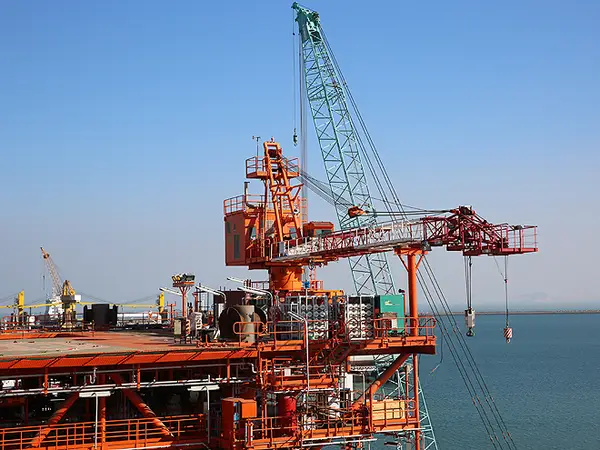The lucrative Chalous gas field in the Caspian Sea looks increasingly to be at the center of discussions underway over an Iran-Russia 20-year cooperation deal.
In June, Iran’s Khazar Exploration and Production Company (Kepco), then touted as the field’s main developer, suggested the field held 30 percent of the developable natural gas reserves of all Caspian Sea littoral counties and could potentially meet 20 percent of all European demand for gas.
But those figures may need revising, upwards - a point well grasped in Moscow. According to Simon Watkins, of Oilprice.com, further studies have revealed that the field has far more reserves than previously thought, with a total 7.1 trillion cubic meters, fully half the reserves of South Pars, Iran’s huge field in the Persian Gulf.
Watkins reported Monday that this has led to a revised understanding, during the Tehran-Moscow cooperation discussions, that would see for 20 years 40 percent share of output go to Russia’s Gazprom and Transneft, 28 percent to China’s CNPC (China National Petroleum Corporation) and CNOOC (China National Offshore Oil Corporation), and only 25 percent to Iran’s Kepco. This division (more on the missing 7 percent below) would apply even though the field falls within Iranian sovereignty.
Such an agreement, Watkins suggested, would enable Russia to head off any potential challenge to its own place in the European market – while presumably keep up gas prices to both Russia’s and Iran’s benefit – posed by a new supply of Iranian gas if US sanctions ended.
The advantages for Iran would be bringing in Transneft for transportation, CNPP for financing, CNOOC for infrastructure and engineering, one source told Watkins. The deal would also give Iran some level of Russian political support internationally, including in future issues over Iran’s nuclear program and its 2015 nuclear deal with world powers, the JCPOA (Joint Comprehensive Plan of Action).
And the pot is large. With Transneft reporting to Moscow that latest research suggests Chalous could supply 52 percent – rather than 20 percent – of Europe’s needs over the 20 years of the agreement, the financial benefits to Iran would be significant. A 28 percent share of a gas field potentially worth $450 billion over 20 years would be $5.6 billion annually or a total of $112 billion.
IRGC ‘real management’
Such benefits could be particularly useful, Watkins suggested, for “hydrocarbons companies closely associated with the Revolutionary Guards Corps (IRGC)” that would exercise the “real management” over the Iranian operation and would scoop the missing 7 percent from the carve up. Once the 20-year agreement ended, remaining exploitation of Chalous would lie with the IRGC construction arm, Khatam-ol Anbia, leaving it the lion’s share of a total value of the field now put overall at a staggering $5.4 trillion.
Imponderables remain. There has been talk of European investment in the field – but this would surely depend on the easing of United States sanctions that drove out of South Pars operators like Total, a world leader in offshore gas and in liquefaction.
And while Russia and China are both increasingly evading US sanctions, including through reducing dollar-denominated trade both bilaterally to under 50 percent and around the Shanghai Cooperation Organization, it is hard to see Chalous field developing its real potential and fully tapping European demand with stringent US sanctions in place.
Complications might also arise in domestic Iranian politics, where government critics may denounce a diminution in sovereignty and loss of resources. If either proves a bitter pill to swallow, the taste will not be sweetened by Watson’s calculation that the new Chalous figures when counted as sovereign Iranian assets − with allowance made for Russia’s own figures being out of date − mean Iran has now the world’s biggest gas reserves.
